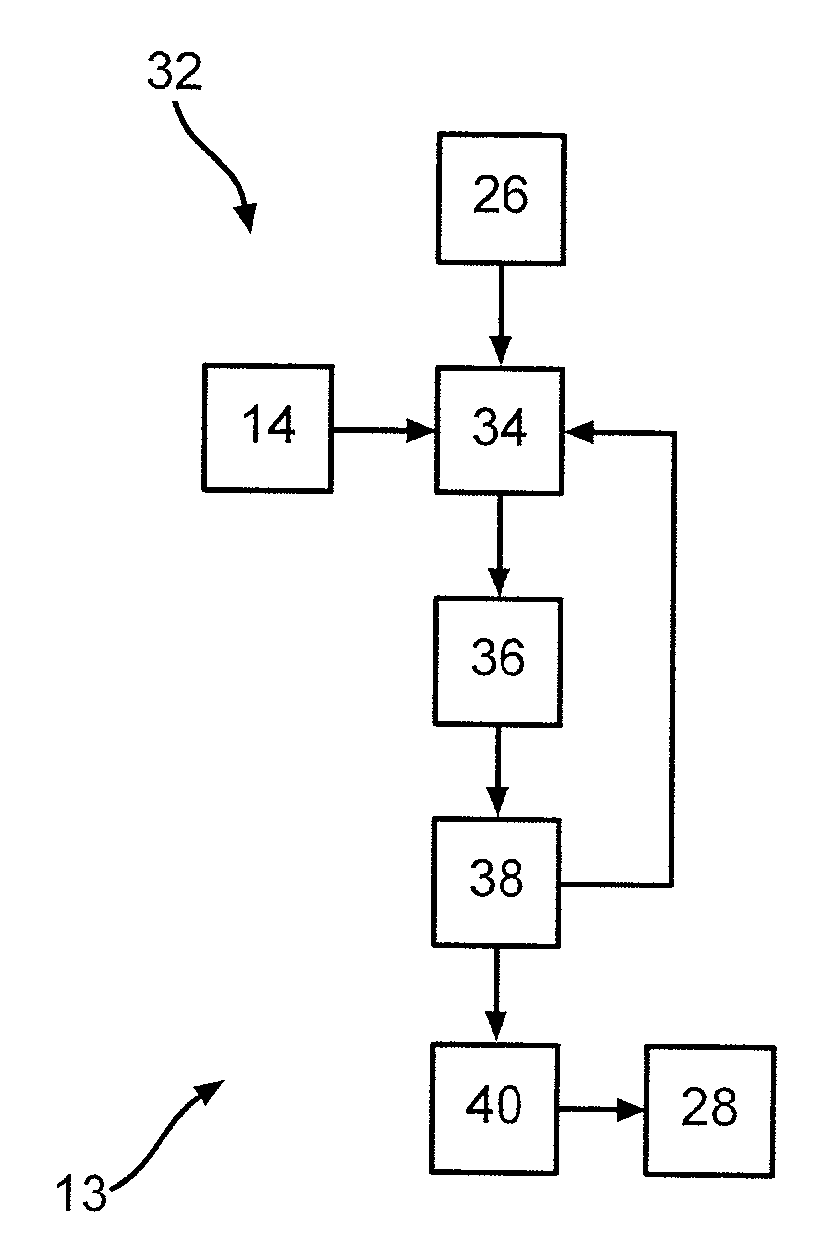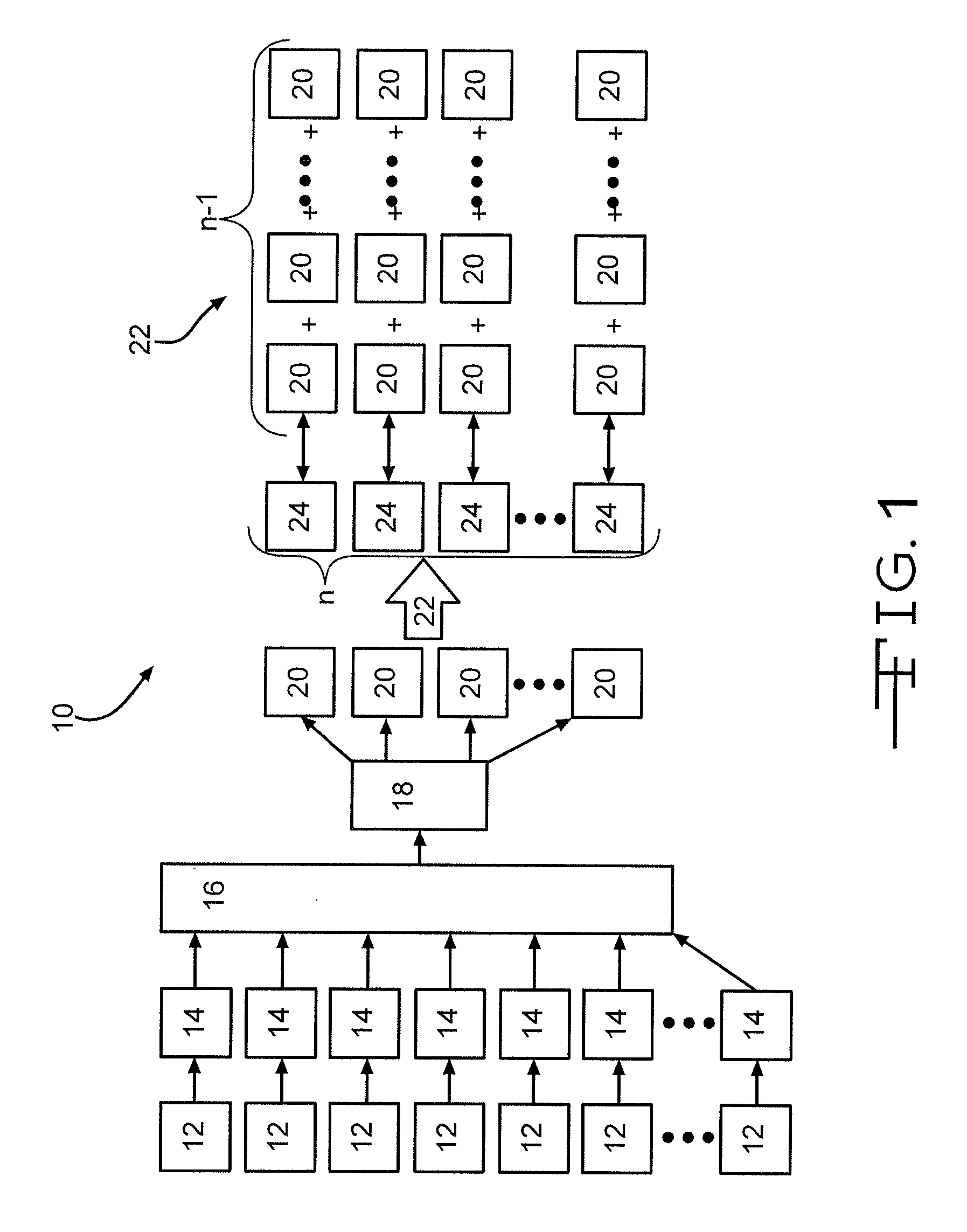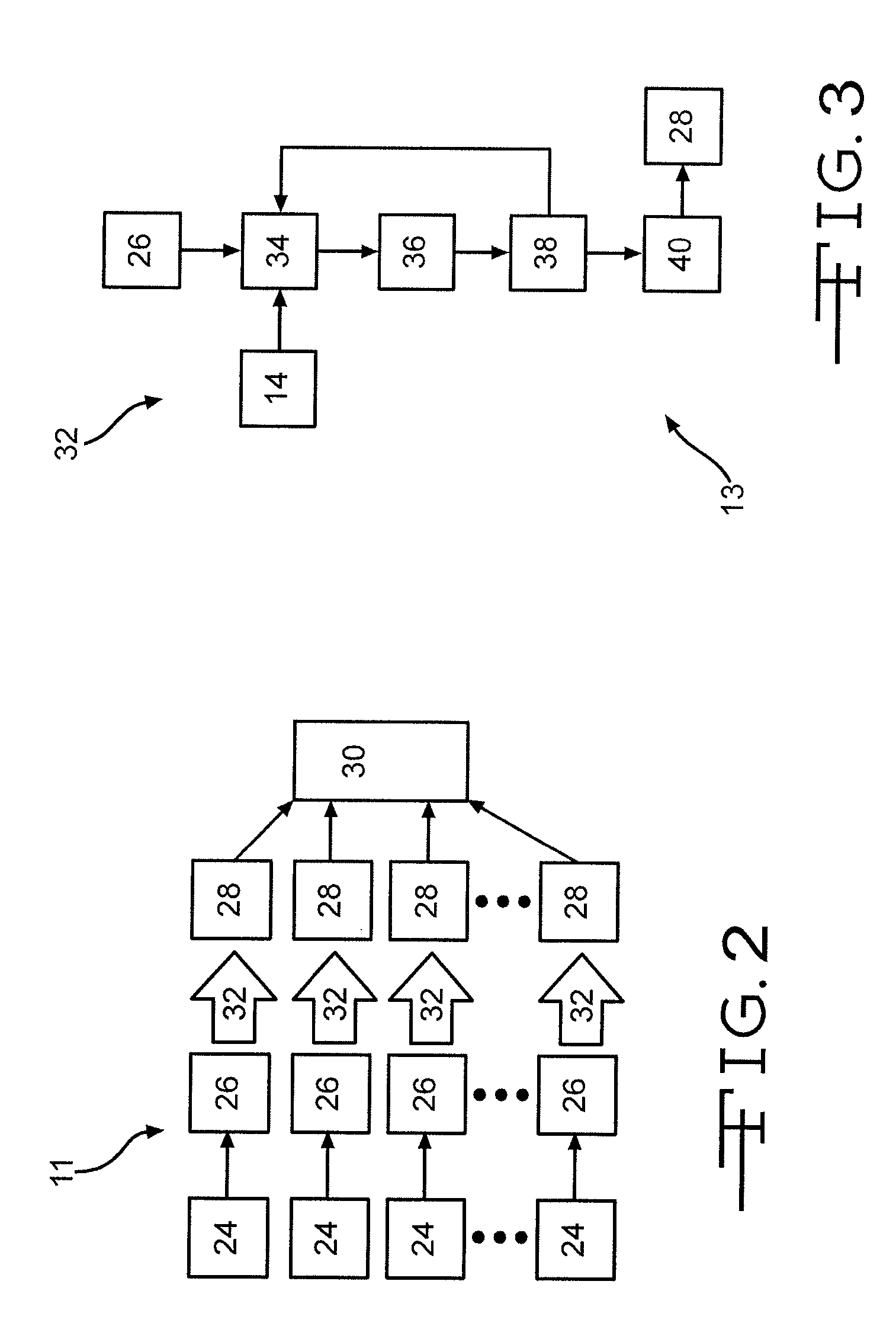Predicting Continuous Positive Airway Pressure Titration Using An Artificial Neural Network
a neural network and continuous positive technology, applied in biological neural network models, hybrid computing, instruments, etc., can solve problems such as inaccurate regression equations, potential serious health consequences, and inability to predict cpap pressure prior to titration, and achieve accurate and efficient methods.
- Summary
- Abstract
- Description
- Claims
- Application Information
AI Technical Summary
Benefits of technology
Problems solved by technology
Method used
Image
Examples
Embodiment Construction
[0025] Like drawing numbers on different figures identify identical or functionally similar structural features of the invention. The present invention is described with respect to what is presently considered to be the preferred aspects, but it should be appreciated that the invention as claimed is not limited to the disclosed aspects. The invention is not limited to the particular methodology, materials and modifications described and as such may vary. The terminology used herein is for the purpose of describing particular aspects only, and is not intended to limit the scope of the present invention.
[0026] Unless defined otherwise, all technical and scientific terms used herein have the same meaning as commonly understood to one of ordinary skill in the art to which this invention belongs. Any methods, devices or materials similar or equivalent to those described herein can be used in the practice or testing of the invention, but the presently preferred methods, devices, and mate...
PUM
 Login to View More
Login to View More Abstract
Description
Claims
Application Information
 Login to View More
Login to View More - R&D
- Intellectual Property
- Life Sciences
- Materials
- Tech Scout
- Unparalleled Data Quality
- Higher Quality Content
- 60% Fewer Hallucinations
Browse by: Latest US Patents, China's latest patents, Technical Efficacy Thesaurus, Application Domain, Technology Topic, Popular Technical Reports.
© 2025 PatSnap. All rights reserved.Legal|Privacy policy|Modern Slavery Act Transparency Statement|Sitemap|About US| Contact US: help@patsnap.com



